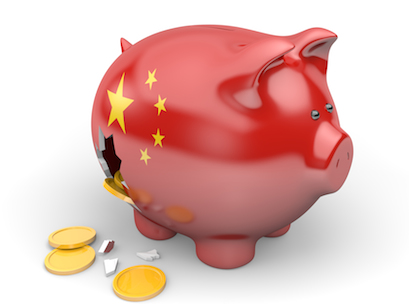The slowing China GDP growth rate is only one piece in a much larger picture of what’s really going on in China’s economy.
China’s economic growth slowed to 7.4 per cent last year, causing the country to miss its full-year economic target for the first time since 1998.
However, China also became the world’s top destination for foreign direct investment (FDI) in 2014, surpassing the United States. China maintained an average growth rate of more than 10 per cent until 2010; its GDP growth rate reached a peak in 2007 at 14.2 per cent. By comparison, the last time the U.S. economy (the only one bigger than China’s) grew by more than 10 per cent was in 1950.
China’s lower growth has recently become a top concern for foreign investors. However, the national growth figure in a way distorts the true picture of the Middle Kingdom’s economic conditions. China is a vast and diverse country, with the economy in transition to wean off its decade-long reliance on heavy industry.
Provincial GDP Figures
In China, the socio-economic conditions and market potential vary drastically per region. China’s Go West and Go Inland campaign have led to increased economic activity in its inland and western regions. Some of China’s inland regions saw local GDP growth of over 10 per cent, such as Chongqing and Guizhou in 2014. Specifically, Chongqing has replaced Suzhou to become the country’s prime laptop manufacturing base. The city has been ranking first among Chinese cities in terms of GDP growth for two years in a row.
In Xinjiang and Tibet, China’s westernmost provinces, GDP growth exceeded 10 percent as well. The growth rates are comparatively lower in big cities such as Beijing (7.3 percent) and Shanghai (7 per cent), where the economy is more developed and has been growing at a stable rate. In Shanxi, the economic growth dropped to 4.9 per cent, ranking at the bottom among Chinese provinces. The slowing demand for coal nationwide and anti-pollution measures that curb production may add more pressure on this largely coal-dependent province. Lastly, most provinces strongly connected to heavy industry, like Heilongjiang and Liaoning, missed their target for GDP growth in 2014.
Economic Growth at the Industry Level
China is making a shift from a manufacturing to service economy, from an export-based to consumer-based economy. While the central government decided to roll back some of the previous preferential policies offered to foreign manufacturers, new tax incentives are continually introduced for service providers. In the latest Guidance Catalogue for Foreign Investment Industries, restrictions have been lifted on service industries such as accounting and auditing, legal consulting and market surveying.
In 2014, with a growth rate of 8.1 per cent, the service industry accounted for more than 48 per cent of the country’s economy. Data shows that FDI in China’s service sector has substantially increased while the manufacturing industry attracted less foreign investment. Last year, retail sales increased 12 per cent compared to the previous year. Online retail is rapidly growing, up 49.7 per cent from the previous year. Along with the booming e-commerce industry, express delivery service was another success story, growing at a staggering 51.9 per cent last year. Chinese-made goods are losing favor with China’s increasingly demanding consumers. From food to clothing, mobile phones and cars, Chinese consumers are now willing to pay for better quality products and services – which in the mind of the Chinese consumer, often means foreign products.
Undoubtedly, foreign investors doing business in China are facing challenges. On the one hand, many foreign manufacturers have been forced to withdraw their investments in China because of rising manufacturing and labor costs. On the other hand, brand new investment opportunities can be found in emerging industries such as healthcare, elderly care, the cultural industry and IT services. Especially, clean energy and environmental protection is set to be the next investment trend, after Chinese Premier Li Keqiang’s speech on “declaring war on pollution.”
Asia Briefing Ltd. is a subsidiary of Dezan Shira & Associates. Dezan Shira is a specialist foreign direct investment practice, providing corporate establishment, business advisory, tax advisory and compliance, accounting, payroll, due diligence and financial review services to multinationals investing in China, Hong Kong, India, Vietnam, Singapore and the rest of ASEAN. For further information, please email china@dezshira.com or visit www.dezshira.com.
Stay up to date with the latest business and investment trends in Asia by subscribing to their complimentary update service featuring news, commentary and regulatory insight.






